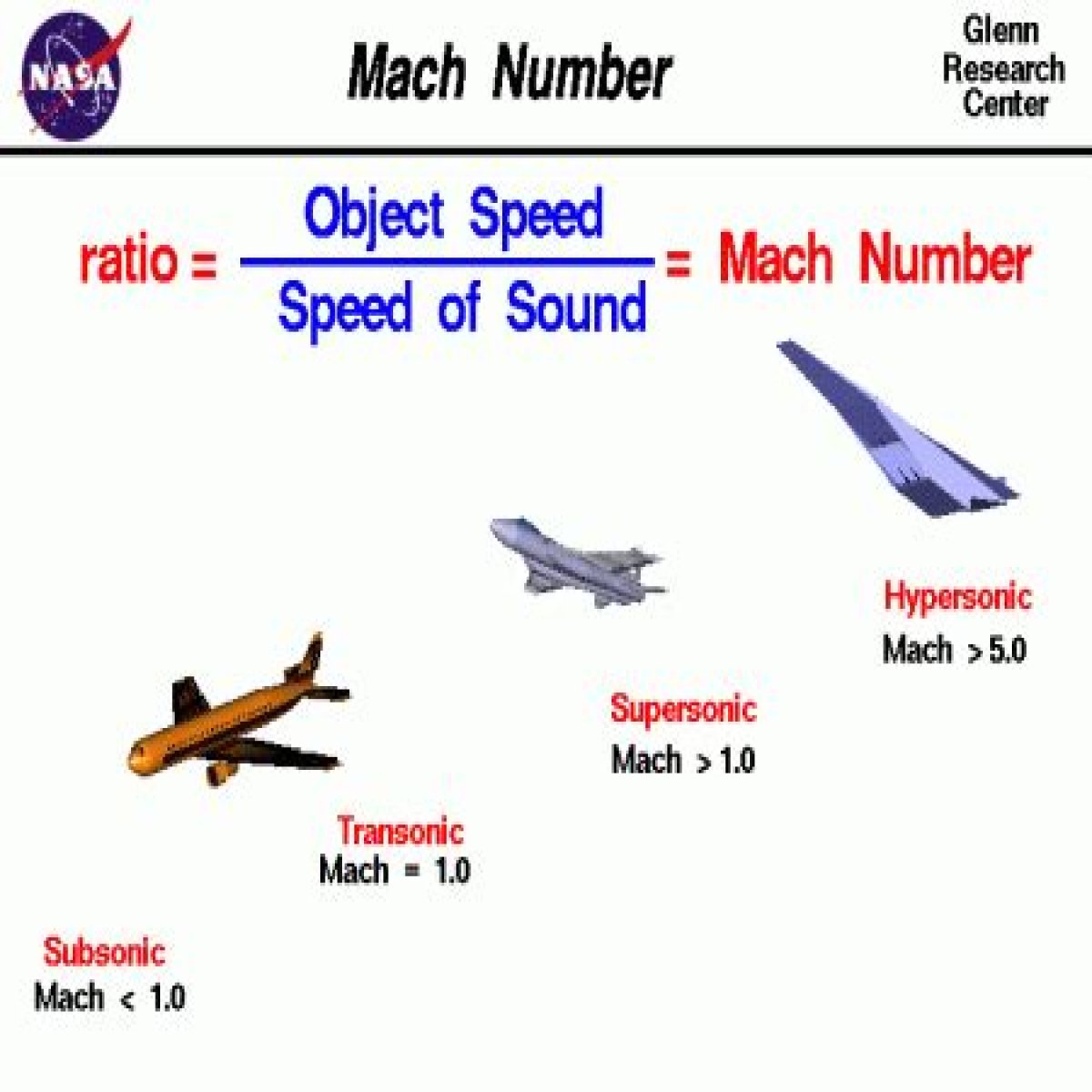How fast is Mach 1.2? Mach 1.2 is the speed of sound in air at 15 degrees Celsius (59 degrees Fahrenheit) which is 1,235 kilometers per hour or 767 miles per hour.
It is used to describe the speed of aircraft and other objects moving through the air. Mach 1.2 will vary depending on the temperature of the air. For example, at sea level at a standard temperature of 15 degrees Celsius (59 degrees Fahrenheit), Mach 1.2 is approximately 1,235 kilometers per hour (767 mph). However, at higher altitudes where the air is colder, Mach 1.2 will be faster. For example, at an altitude of 11,000 meters (36,000 feet), Mach 1.2 is approximately 1,320 kilometers per hour (820 mph).
There are a number of benefits to flying at Mach 1.2. For example, it allows aircraft to travel faster, which can save time and fuel. It also reduces the amount of drag on the aircraft, which can improve fuel efficiency. Additionally, flying at Mach 1.2 can help to reduce the amount of noise pollution generated by the aircraft.
Here is a table that summarizes the key points about Mach 1.2:
| Mach Number | Speed (km/h) | Speed (mph) |
|---|---|---|
| 1.2 | 1,235 | 767 |
Mach 1.2 is a significant milestone in aviation history. It is a testament to the ingenuity and innovation of engineers and scientists who have worked to push the boundaries of what is possible in the field of aviation.
FAQs on "How Fast is Mach 1.2"
This section provides concise answers to frequently asked questions about Mach 1.2, offering valuable insights for better understanding this topic.
Question 1: What is Mach 1.2?
Answer: Mach 1.2 refers to the speed of sound in air at 15 degrees Celsius (59 degrees Fahrenheit), which is approximately 1,235 kilometers per hour or 767 miles per hour. It is used as a reference point to measure the speed of aircraft and other objects moving through the air.
Question 2: What are the benefits of flying at Mach 1.2?
Answer: Flying at Mach 1.2 offers several advantages. It enables aircraft to travel faster, reducing travel time and fuel consumption. Additionally, it minimizes drag on the aircraft, further enhancing fuel efficiency. Moreover, flying at Mach 1.2 can mitigate noise pollution generated by aircraft.
In summary, Mach 1.2 represents a significant milestone in aviation, demonstrating the advancements made in the field. Understanding its implications enhances our knowledge of aircraft performance and the broader impact on air travel.
Conclusion
Mach 1.2, representing the speed of sound in air at 15 degrees Celsius, holds immense significance in the realm of aviation. It serves as a benchmark for measuring the velocity of aircraft and other objects traversing the skies. The exploration of "how fast is Mach 1.2" has unveiled its impact on various aspects of air travel, such as reduced travel time, enhanced fuel efficiency, and mitigated noise pollution.
As aviation technology continues to advance, the pursuit of even greater speeds beyond Mach 1.2 is likely to remain a driving force for innovation. Supersonic and hypersonic aircraft are being developed to push the boundaries of speed and efficiency, promising transformative changes in air transportation. The knowledge gained from exploring Mach 1.2 provides a solid foundation for these future advancements.
